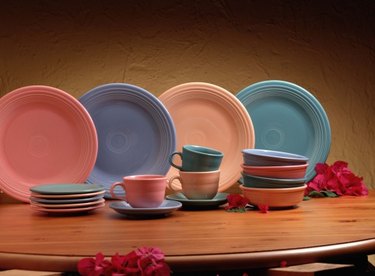Things You'll Need
Black bitumen based sealant
Small foam brush
Marble Infusion sealant

Sealing ceramic vessels isn't very hard as long as you have the right equipment. Unfortunately for most of us, we don't have kilns in our homes nor ovens that reach high enough temperatures to completely seal a ceramic glaze. That's where commercial sealants come into play. Using a sealant purchased at a local hardware store you can seal and waterproof any ceramic pot, plate or cup. There are several to choose from, with ones based on black bitumen being the best for garden pots.
Step 1
Wash your ceramic vessel after it has been fired.
Video of the Day
Step 2
Dip your foam brush in the black bitumen based sealant and paint a bit on the interior of the vessel. If you are planning to use this ceramic piece for food related purposes, do not use the bitumen. Instead, skip to Step 4.
Step 3
Cover the entire ceramic vessel with the black bitumen based sealant. Let it sit for six hours and then test the seal by filling the vessel with water. If there is a leak, dry the vessel and re-apply sealant.
Step 4
Apply a liberal amount of Marble Infusion sealant to both the interior and exterior of your ceramic vessel. This sealant penetrates the glaze and bonds directly with the ceramic on a molecular level. Let it sit for 24 hours to complete the process.
Step 5
Test the seal by filling the vessel with hot water. When ceramic heats up, it expands and may expose pinpoint sized flaws in the seal. If there are leaks, heat the ceramic and apply another coat of Marble Infusion to the warm vessel to fill in the exposed leak.
Video of the Day